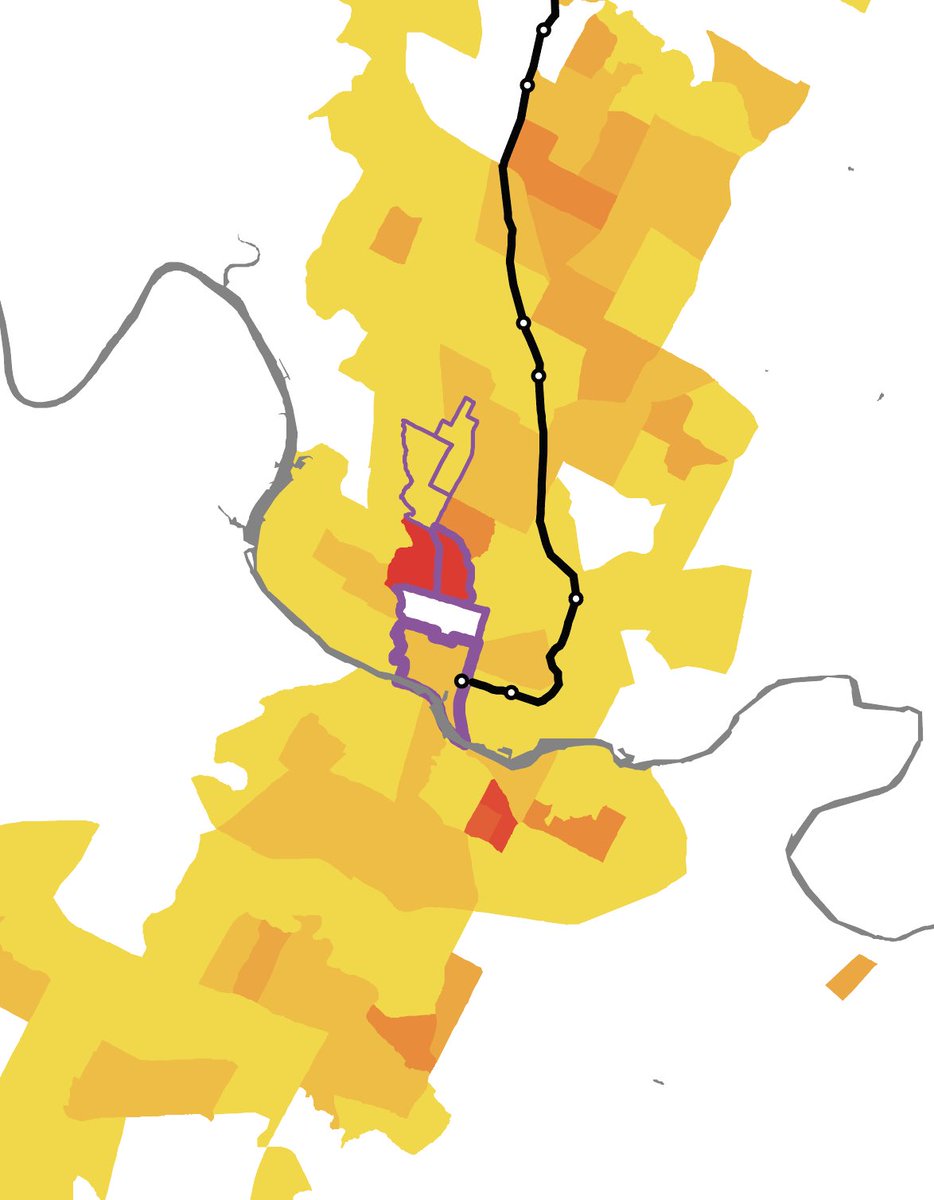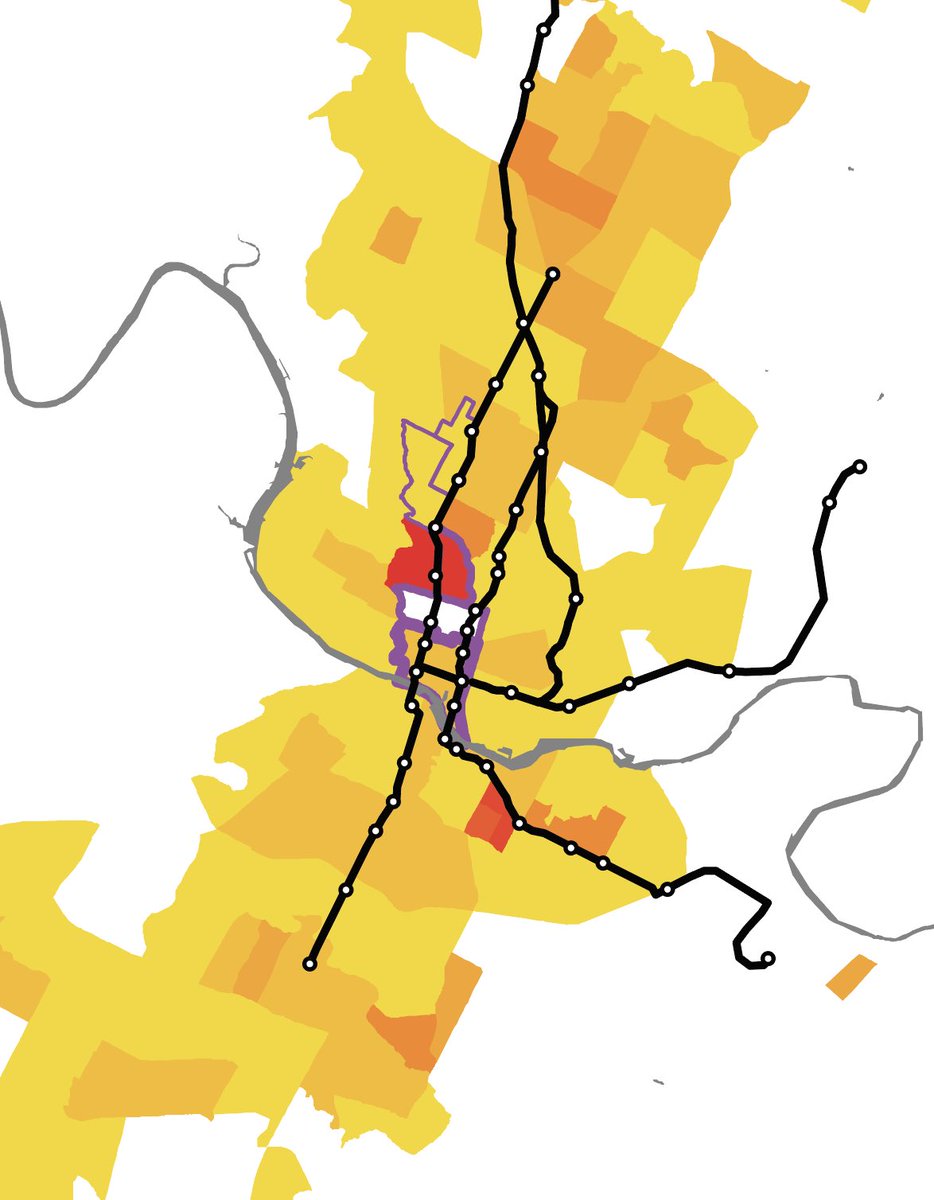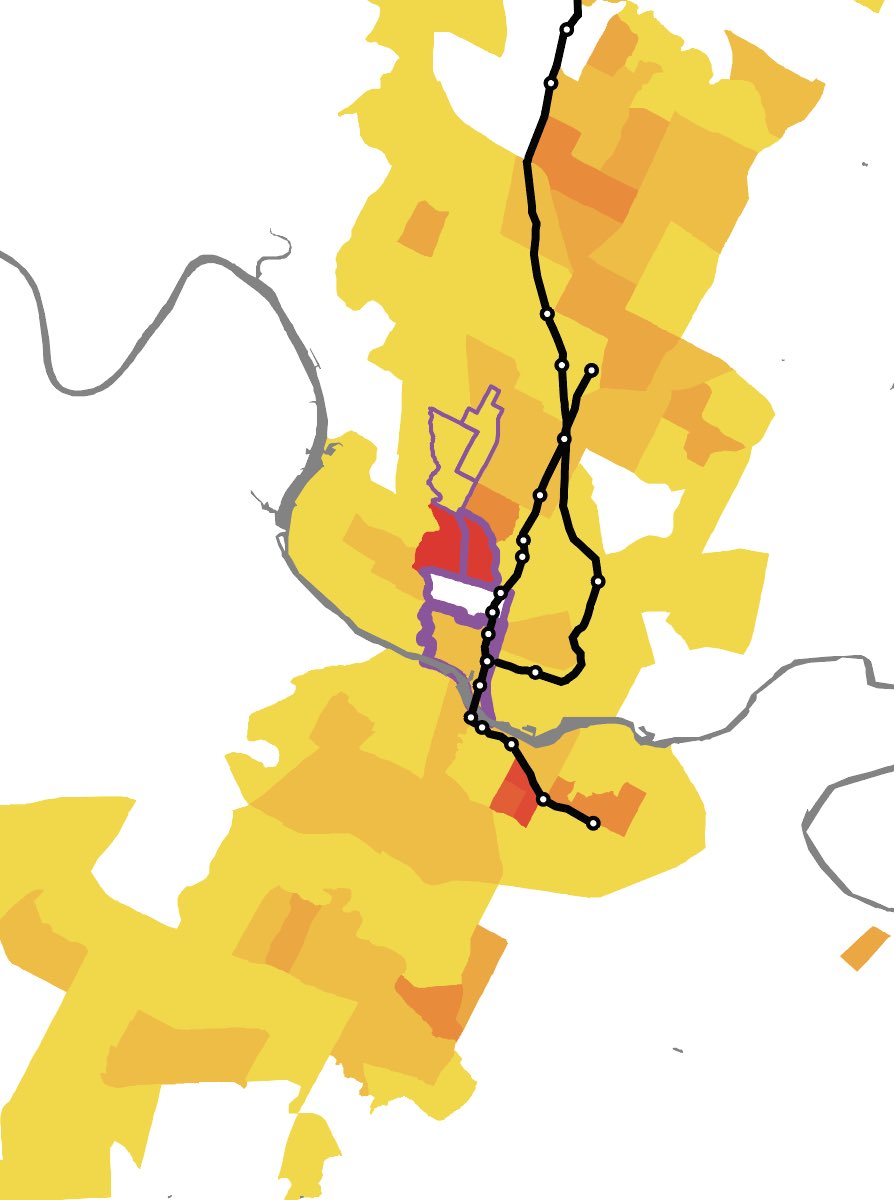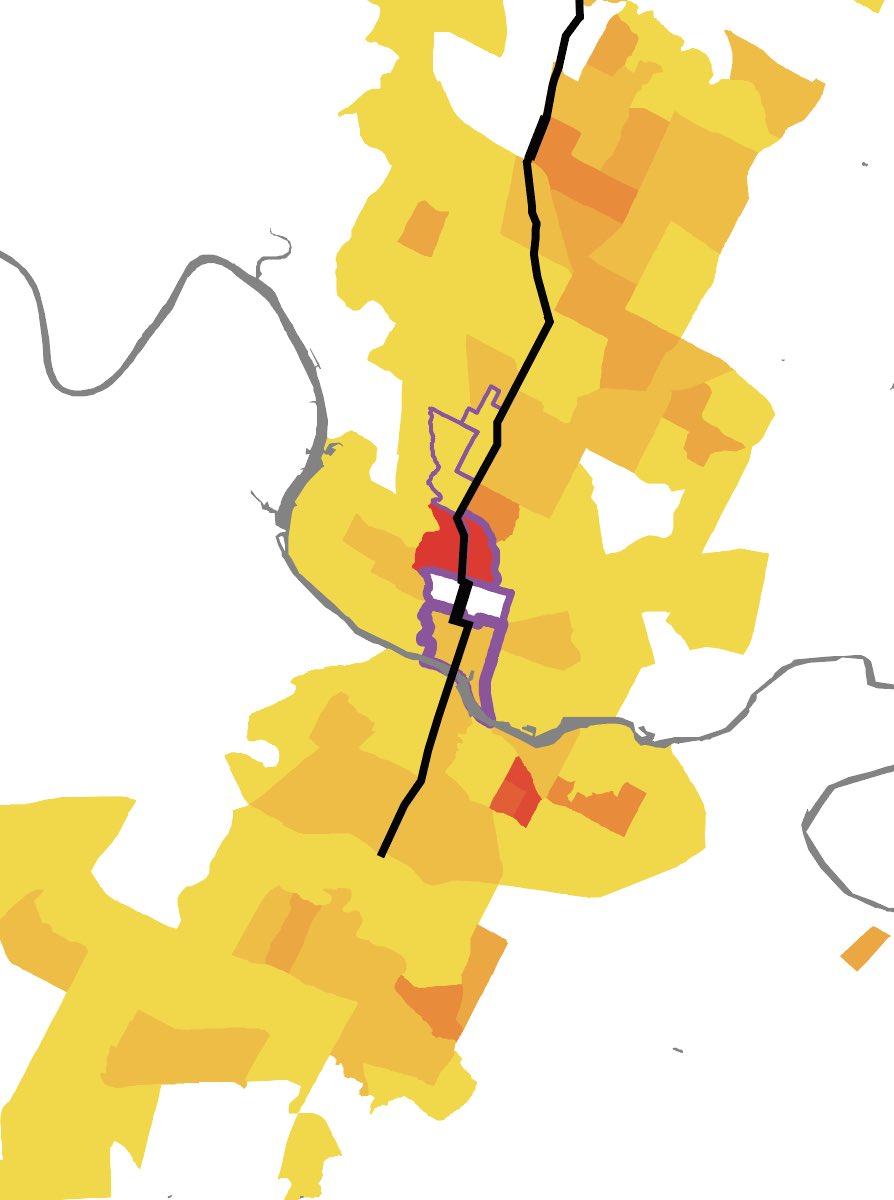In “Trains, Buses, People, I note how the Austin Red Line, as a result of political compromise, misses both the highest concentrations of population (red/orange) and jobs (the purple outlines.)
But the transit plan Austin voters just passed goes right where the people are, with light rail (largely street running, with a short downtown subway) in Austin’s two most important corridors, Congress/Guadalupe/Lamar and Riverside, plus BRT (future rail) on the east side of UT.
These rail lines — connecting to Downtown, the capitol complex, UT, and major hospitals — will link to Austin’s redesigned bus network and rapid bus service, becoming the spines of the entire network. The $7.1 billion plan includes improvements to those routes, too.
In 2000, Austin barely voted down a Congress/Guadalupe/Lamar rail plan, and in 2014 a smaller rail plan was overwhelmingly defeated. This time, though the transit plan (including increased taxes) got 68% of the vote. Good planning and extensive outreach, is a big part of that.
But this is also a political shift, a similar pattern to what we’ve seen in Houston and elsewhere: cities that were once split on support for transit are now strongly in favor, and more ambitious plans do better than small ones. (More on the Austin plan: https://www.capmetro.org/project-connect .)
Grassroots organizing also played a big role. I n 2000, some environmental groups opposed rail. Today’s there’s a new group of activists that see transit as a part of a more sustainable, more equitable city; they pushed for years to create a good plan, and they campaigned for it.
Here’s the 2014 plan that failed — it included one rail line, but not in the key Congress/Guadalupe/Lamar corridor, thereby missing some of the densest parts of the city, and was bundled with highway construction but no other transit improvements.
In many ways, this was conventional wisdom on transit propositions a decade ago: (1) focus on rail, since that’s exciting (2) don’t include too much so voters who are skeptical of transit won’t be turned off by cost (3) add road projects to get more support (4) avoid controversy.
In the end, it didn’t get support from transit skeptics, and it didn’t get support from transit supporters, either. The new model: go big to get people excited, include lots of overall transit improvements to make sure lots of current riders benefit, and pay attention to equity.

 Read on Twitter
Read on Twitter





